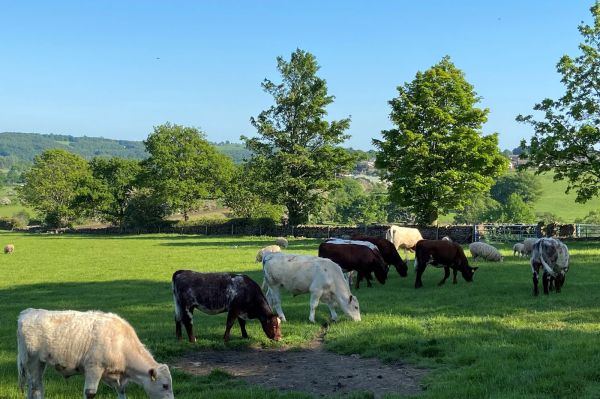Importance of prolonging anthelmintic effectiveness

What is Levamisole?
Levamisole, sometimes known as ‘yellow drench’, has a broad spectrum of anthelmintic activity against mature and developing immature stages of gastrointestinal worms and lungworm in cattle and sheep.
Right time, right product, right animal
There are three classes of anthelmintics licensed for the treatment of stomach and lungworm in cattle in Ireland: benzimidazoles (white); imidazothiazole (yellow); and macrocyclic lactones (clear).
Levamisole is the only member of the imidazothiazole group of anthelmintics licensed in Ireland and offers an alternative to benzimidazoles and macrocyclic lactones. Alternative options are important, given that a number of Irish studies are showing evidence of resistance amongst the main species of cattle gut worms. Where anthelmintic resistance is suspected, your vet will be able to test for effectiveness and prescribe alternative treatments.
There are many risk factors for anthelmintic resistance. The best way of limiting selection pressure on worm populations is to avoid treating cattle unnecessarily and to always ensure the correct drug and dose are used. It is important to understand that each of the wormer classes has different characteristics and that will influence whether they are the right choice for your farm.
Responsible parasite control in young cattle
Levamisole can play a useful role in devising season-long, parasite control-management strategies for different management groups. Young stock at grass are completely naive to gut and lungworm infections. As they graze, they are exposed to both gut and lungworm, acquiring low-level burdens that complete their lifecycle in the animal before the adult worms then contaminate the pasture with eggs. The rate at which immunity develops is dependent on the level of exposure to infective larvae. By the second grazing season, they will have acquired some immunity and will be better able to tolerate a low worm burden.
Achieving a balance between allowing enough exposure to stimulate protective immunity, but not so much as to cause pathogenic burdens of worms is critical to sustainable worm control. The judicious use of the right anthelmintic treatment at the correct time can reduce potential production losses.
However, if calves have no exposure at all to pasture or are over-protected in their first grazing season (as may occur following the use and/or repeated use of persistent wormers), they may fail to develop sufficient immunity to give necessary protection throughout their adult life.
Levamisole has no persistency, so may be a suitable initial grazing treatment, or ‘primer dose’ that allows immunity to develop following exposure to gut worms early in the season.
Levamisole can be prescribed before or after other wormer classes throughout the season to provide effective and responsible parasite-control strategies that balance immunity, treatment and persistency where appropriate.
Dairy cows rely heavily on the benzimidazole and macrocyclic lactone anthelmintic classes due to product licences and milk withdrawals. Levamisole is not suitable for use in dairy cows but may be a useful alternative wormer for dairy youngstock or heifers.
Effective lungworm treatment
Lungworm infection in growing cattle can develop quickly and incur significant production losses.
The risk from lungworm depends on pasture contamination, previous exposure, immunity and whether cattle have been vaccinated. Lungworm causes coughing and laboured breathing and, if left untreated, can result in death or long-term debility.
Lungworm – top three tips
- Monitor regularly for lungworm;
- Be vigilant for the first signs of coughing; and
- Dose the whole management group at the first sign of infection.
Levamisole is a particularly effective treatment for lungworm during the grazing period due to its unique mode of action. Because levamisole causes spastic paralysis of susceptible worms, cattle find it easier to cough the worms up following treatment.
Using levamisole drench
Levacide Low Volume contains 75mg/ml levamisole is recommended for use in cattle and sheep at a dosage rate of 1ml per 10kg. Always determine bodyweight as accurately as possible in order to avoid under-or overdosing. If animals are to be treated collectively rather than individually, they should be grouped according to their bodyweight and treated accordingly with properly calibrated dosing equipment. Always seek advice from your vet about the use of medicines appropriate to your farm.




